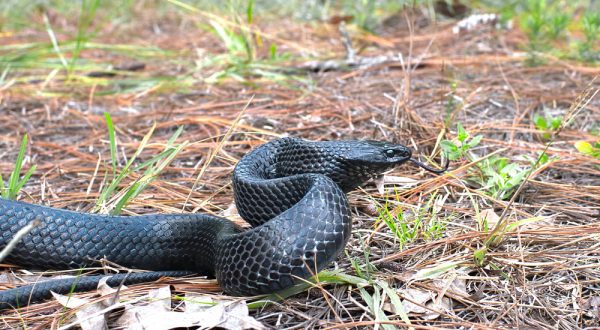Do you ever wonder if snakes feel anger? Well, get ready to be surprised! In this article, we are going to delve into the mysterious world of snake emotions.
You’ll discover the fascinating ways in which these slithering creatures express their feelings, and we’ll even explore the possibility of anger in snakes.
So, buckle up and prepare to unravel the secrets of snake psychology. It’s time to uncover the truth about their emotional lives!
Key Takeaways
- Snakes communicate through body language and the release of pheromones.
- Understanding snake body language helps in understanding their intentions and emotions.
- Snake aggression can be a result of territoriality or defensive behavior.
- Snake vocalizations and body language indicate their emotional state, including anger.
The Emotional Lives of Snakes
Did you know that snakes can experience emotions, including anger? It may surprise you, but snakes aren’t emotionless creatures. They’ve their own ways of communicating and interacting socially.
Snake communication is primarily done through body language and the release of pheromones. When a snake feels threatened or angry, it will display warning signs such as hissing, inflating its body, and shaking its tail. These behaviors communicate to other animals that the snake is ready to defend itself.
Snakes also engage in social interactions, especially during mating season. They use a combination of visual cues and chemical signals to attract potential mates. These interactions are crucial for their survival and reproductive success.
Understanding Snake Behavior
Understanding snake behavior involves observing their body language and reactions in various situations. By paying attention to their communication cues, you can gain insights into their intentions and emotions.
Snakes use a variety of signals to convey their messages, such as hissing, tail rattling, and body posturing. These behaviors serve as warnings to potential threats or competitors, indicating their territoriality and willingness to defend their space.
Additionally, snakes may display defensive behaviors when they feel threatened or cornered, such as lunging or striking. By understanding these signals, you can better navigate encounters with snakes and reduce the risk of aggression.
Exploring Snake Aggression
When encountering aggressive behavior from a snake, it’s important to remain calm and slowly back away to avoid provoking further aggression. Snakes can display aggression due to territoriality or defensive behavior. Understanding these behaviors can help you navigate encounters with snakes safely.
| Snake Territoriality | Snake Defensive Behavior |
|---|---|
| Snakes may become territorial and display aggression when they feel their territory is being invaded. | When snakes feel threatened or cornered, they may exhibit defensive behavior, such as hissing, striking, or coiling up to protect themselves. |
| They may exhibit territorial aggression towards other snakes of the same species or even towards humans in certain situations. | Defensive behavior is a natural response to potential harm and is their way of defending themselves from perceived threats. |
| It is important to give snakes their space and avoid disturbing their territory to prevent triggering aggressive responses. | Keeping a safe distance and respecting their space is crucial to avoid provoking defensive behavior and ensuring your own safety. |
Unraveling Snake Emotions
To better understand snake emotions, you can observe their body language and interpret their behavior. Snake body language plays a crucial role in their communication, allowing them to express their emotions and intentions. Here are some key aspects of snake body language that can help you decipher their emotions:
- Posture: A snake may coil tightly or flatten its body to indicate aggression or readiness to strike.
- Tail movements: Rapid flicking of the tail can signal annoyance or agitation.
- Hissing and hiss intensity: A louder hiss may indicate a higher level of aggression or fear.
By paying attention to these subtle cues, you can gain valuable insights into a snake’s emotional state.
Understanding snake emotions is an essential step towards investigating anger in snakes and uncovering the complexities of their behavior.
Is There a Specific Reason Why Snakes Have a Butt Hole?
The intricacies of snakes’ digestive system explained reveal the presence of a butt hole for a specific reason. This orifice, known as the cloaca, serves as a common chamber for excretion and reproduction. While it may seem peculiar, the evolution of this adaptation ensures efficient waste removal, allowing snakes to maintain their delicate ecological balance.
Investigating Anger in Snakes
You may be surprised to learn that snakes, like humans, can experience intense emotions. While anger is a complex emotion, research suggests that snakes may indeed feel anger in certain situations. Snake vocalizations and body language are important indicators of their emotional state.
| Snake Vocalizations | Snake Body Language |
|---|---|
| Hissing | Coiled posture |
| Rattling | Striking position |
| Growling | Swaying |
When a snake feels angry, it may hiss loudly, rattle its tail, or growl. These vocalizations serve as warning signals to potential threats. Additionally, snakes may adopt a coiled posture or assume a striking position when they are angry. Swaying movements can also be a sign of aggression or anger in snakes. By closely observing their vocalizations and body language, we can gain insights into their emotional state and better understand the complex world of snake emotions.











